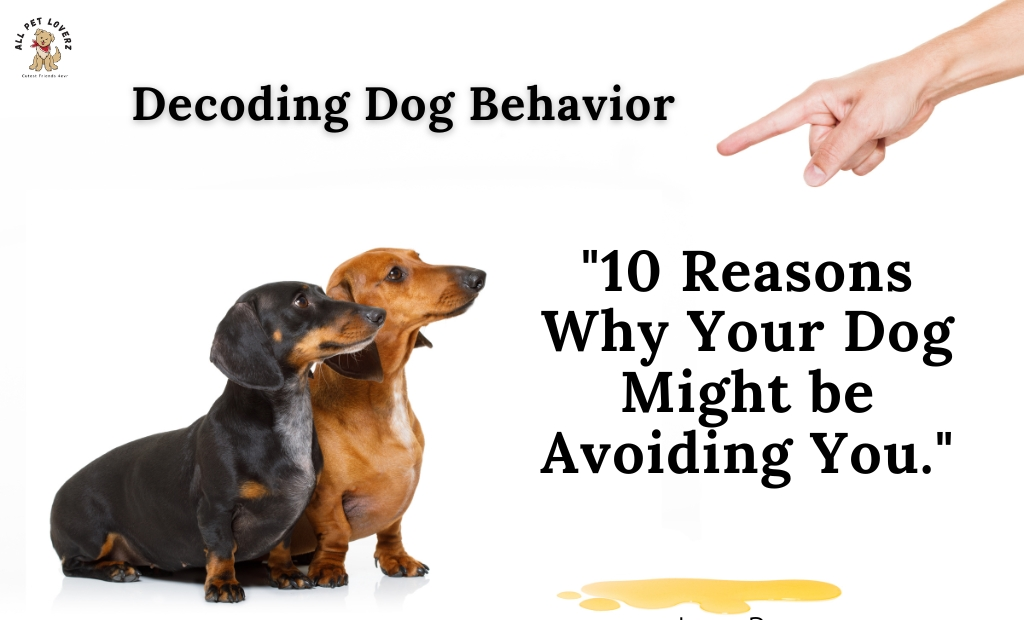Introduction
Understanding your dog’s behavior is essential for building a strong and trusting bond. In this article we are going to know top 10 Reasons why your dog might be avoiding You. If you’ve noticed your furry friend avoiding you, it could signal underlying issues that require attention. In this blog post, we’ll explore the potential reasons why your dog might be avoiding you, shedding light on the various factors that can influence canine behavior. Before going deep in the reasons lets have a quick overview of what are the main reasons why your dog started avoiding you.
List of 10 Reasons of Avoidance of dog in 21st Century
- Fear and Anxiety
- Health Issues
- Lack of Socialization
- Behavioral Changes
- Grooming or Physical Discomfort
- Training and Communication
- Aging and Cognitive Decline
- Environmental Stressors
- Unresolved Behavioral Issues
- Trust Issues
Now lets go deeper and understand the top ten reasons why your dog might be avoiding its owners and how to overcome with them.
1. Fear and Anxiety
The first reason from the top 10 reasons why your dog might be avoiding you is Fear and anxiety. It can be significant factors in why your dog might be avoiding you. Past traumatic experiences and loud noises or unfamiliar environments can trigger these emotions in your furry friend.
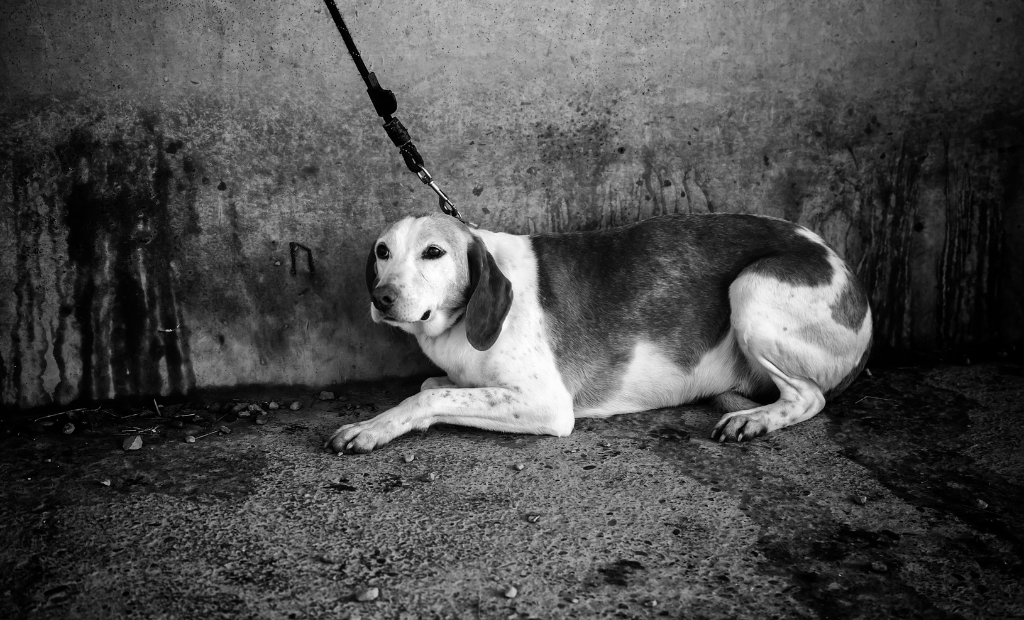
A. Past Traumatic Experiences
Dogs, like humans, can be deeply affected by past traumatic experiences. If your dog has experienced abuse, neglect, or any other form of mistreatment in the past, they may develop fear and anxiety towards certain people or situations. This can lead to them avoiding you as a way to protect themselves from potential harm or discomfort. It’s important to approach dogs with a history of trauma with patience, understanding, and gentle care to help them overcome their fears and build trust.
B. Loud Noises or Unfamiliar Environments
Loud noises, such as thunderstorms, fireworks, or construction sounds, can be extremely distressing for dogs. The Noises which occurs suddenly or un expected can fear your dog. Similarly, unfamiliar environments, such as crowded places or new homes, can be overwhelming for dogs and make them feel insecure. They may choose to avoid you in these situations to find comfort and security elsewhere.
To understanding the impact of above traumatic experiences and the influence of loud noises or unfamiliar environments on your dog’s behavior is crucial. By recognizing these, you can take actions to make your dog feel a safe and calm environment, providing them with the support and reassurance they need. This may involve desensitization techniques, creating a designated safe space, or seeking professional help to address any underlying fears or anxieties.
By addressing fear and anxiety in your dog, you can help them feel more comfortable and secure in your presence. This will ultimately strengthen your bond and create a positive and trusting relationship between you and your furry companion.
2. Health Issues
The second reason from the top 10 reasons why your dog might be avoiding you is due to Health Issues. It can be happens due to your pet is not feeling well or illness, pain or discomfort and also might be they are thirsty.
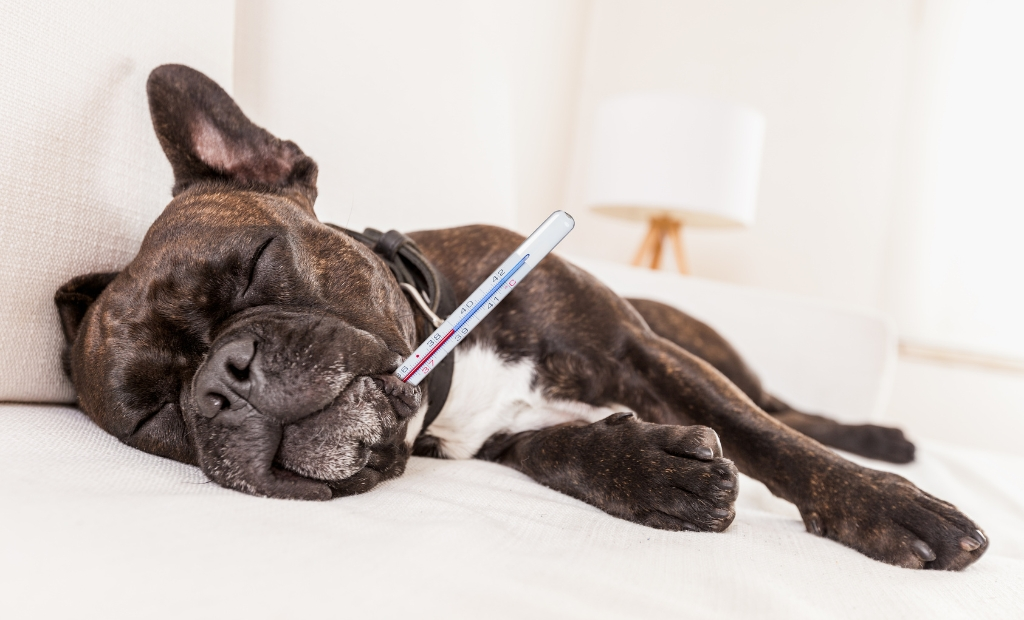
A. Pain or Discomfort
One of the reasons why your dog might be avoiding you is if they are experiencing pain or discomfort. Dogs, just like humans, can suffer from various health issues that can cause them to withdraw or avoid certain activities or interactions. If your dog is in pain, they may associate that pain with being near you or engaging in certain behaviors, leading them to avoid you altogether. It’s important to pay attention to any signs of discomfort your dog may be exhibiting, such as limping, whining, or changes in their posture. If you suspect that your dog is in pain, it’s crucial to consult with a veterinarian to determine the underlying cause and provide appropriate treatment.
Pain or discomfort can be caused by a variety of factors, including injuries, arthritis, dental problems, or internal issues. Dogs may avoid physical contact or certain movements that exacerbate their pain. By observing your dog’s behavior and seeking veterinary advice, you can address their pain and provide them with the necessary care and support.
B. Changes in Appetite or Thirst
Another indicator of potential health issues is changes in your dog’s appetite or thirst. If your dog suddenly starts avoiding you during meal times or shows a lack of interest in food or water, it could be a sign of an underlying health problem. Dogs may avoid eating or drinking due to dental issues, gastrointestinal problems, or other medical conditions. It’s important to monitor your dog’s eating and drinking habits and consult with a veterinarian if you notice any significant changes. Addressing any health issues promptly can help improve your dog’s overall well-being and potentially alleviate their avoidance behavior.
Regular veterinary check-ups are essential in detecting and addressing any health issues early on. Your veterinarian can perform a thorough examination, conduct necessary tests, and provide appropriate treatment or recommendations. Additionally, maintaining a balanced diet and providing your dog with proper nutrition can contribute to their overall health and well-being.
By being attentive to your dog’s physical well-being and addressing any health issues, you can ensure their comfort and improve their relationship with you. Regular veterinary check-ups, a balanced diet, and appropriate medical care are essential in maintaining your dog’s health and happiness.
Overall, understanding the impact of pain or discomfort and changes in appetite or thirst on your dog’s behavior can help you identify and address any underlying health issues. By providing the necessary care and support, you can help your dog feel better and strengthen your bond with them. Remember, your dog’s avoidance behavior may be their way of communicating that something is wrong, so it’s important to listen and take action to ensure their well-being.
3. Lack of Socialization
The third reason from the top 10 reasons why your dog might be avoiding you is Lack of Socialization. They might be not feeling comfortable in crowded place or not liking to be socialized.
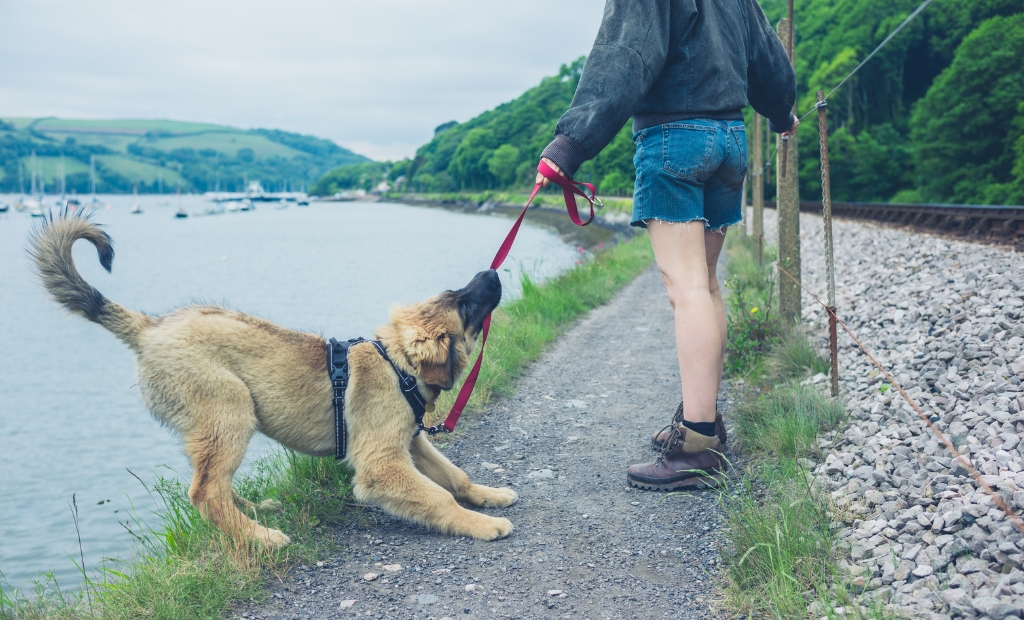
A. Limited Exposure to Different Environments
One possible reason why your dog might be avoiding you is a lack of socialization, particularly limited exposure to different environments. Dogs that have not been properly socialized may feel uncomfortable or anxious in unfamiliar settings, leading them to avoid certain activities or interactions. If your dog has not been exposed to a variety of environments, such as parks, busy streets, or crowded areas, they may become overwhelmed or fearful when faced with these situations.
To address this issue, it’s important to gradually introduce your dog to different environments in a controlled and positive manner. Start by taking them to quieter places and gradually increase the level of stimulation. Provide plenty of positive reinforcement, such as treats and praise, to help them associate these new environments with positive experiences. This will help them build confidence and reduce their avoidance behavior.
B. Insufficient Interaction with Other Dogs
Another factor that can contribute to your dog avoiding you is insufficient interaction with other dogs. Dogs are social animals and thrive on social interactions, including playtime with other dogs. If your dog has limited opportunities to interact with other dogs, they may feel isolated or uncomfortable in social situations, leading them to avoid you or other people.
To address this issue, make an effort to provide your dog with regular opportunities for socialization. Take them to dog parks, arrange playdates with other friendly dogs, or consider joining a dog training or socialization group. These interactions can help your dog develop important social skills, build confidence, and reduce their avoidance behavior.
By addressing the lack of socialization through exposure to different environments and interaction with other dogs, you can help your dog feel more comfortable and confident in various situations. Remember to be patient and provide positive reinforcement to encourage their progress. With time and effort, you can strengthen your bond with your dog and create a more positive and fulfilling relationship.
4. Behavioral Changes
The fourth reason from the top 10 reasons why your dog might be avoiding you is Behavioral Changes.
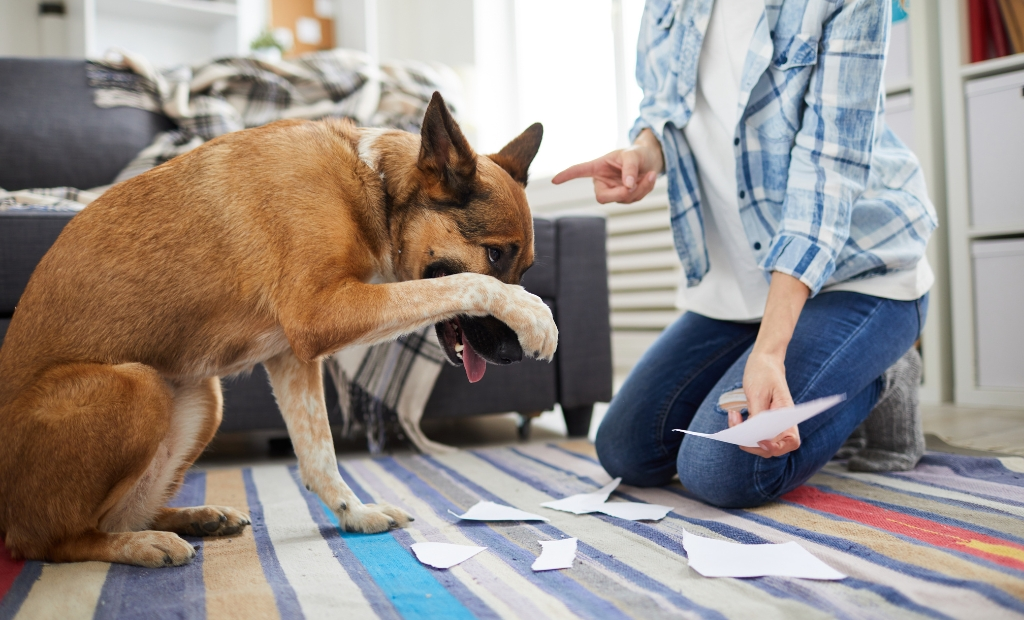
A. Changes in Routine
Changes in routine can be a significant factor in why your dog might be avoiding you. Dogs thrive on consistency and structure, so any sudden or drastic changes to their daily routine can cause stress and anxiety. This can lead to avoidance behavior as they try to cope with the unfamiliar or unpredictable.
Whether it’s a change in your work schedule, a new baby in the family, or even a change in their feeding or exercise routine, dogs can become unsettled and may start avoiding you as a result. They may hide, become more withdrawn, or exhibit other signs of anxiety.
To help your dog adjust to changes in routine, it’s important to provide them with a sense of stability and predictability. Stick to a consistent schedule as much as possible, especially when it comes to feeding, exercise, and playtime. Provide them with plenty of mental and physical stimulation to help alleviate any stress or anxiety they may be experiencing.
B. New Additions to the Family (Human or Pet)
Another reason why your dog might be avoiding you is the introduction of new additions to the family, whether it’s a new baby, a new roommate, or a new pet. Dogs are creatures of habit and may feel threatened or overwhelmed by these changes. They may feel displaced or jealous, leading them to avoid you or the new family member.
To help your dog adjust to new additions, it’s important to provide them with plenty of attention, reassurance, and positive reinforcement. Make sure they still have their own space and time with you, so they don’t feel neglected or pushed aside. Gradually introduce them to the new family member or pet in a controlled and positive manner, allowing them to adjust at their own pace. By addressing changes in routine and providing support during the introduction of new family members, you can help your dog feel more secure and reduce their avoidance behavior. Remember to be patient, understanding, and consistent in your approach. With time and proper guidance, your dog will adapt to the changes and strengthen their bond with you and the rest of the family.
5. Grooming or Physical Discomfort
The fifth reason from the top 10 reasons why your dog might be avoiding you is Grooming or Physical Discomfort. Grooming plays a crucial role in maintaining your dog’s overall health and well-being. However, certain grooming practices can cause discomfort or anxiety in dogs, leading them to avoid you during these activities. Additionally, skin irritations or allergies can also contribute to your dog’s avoidance behavior.
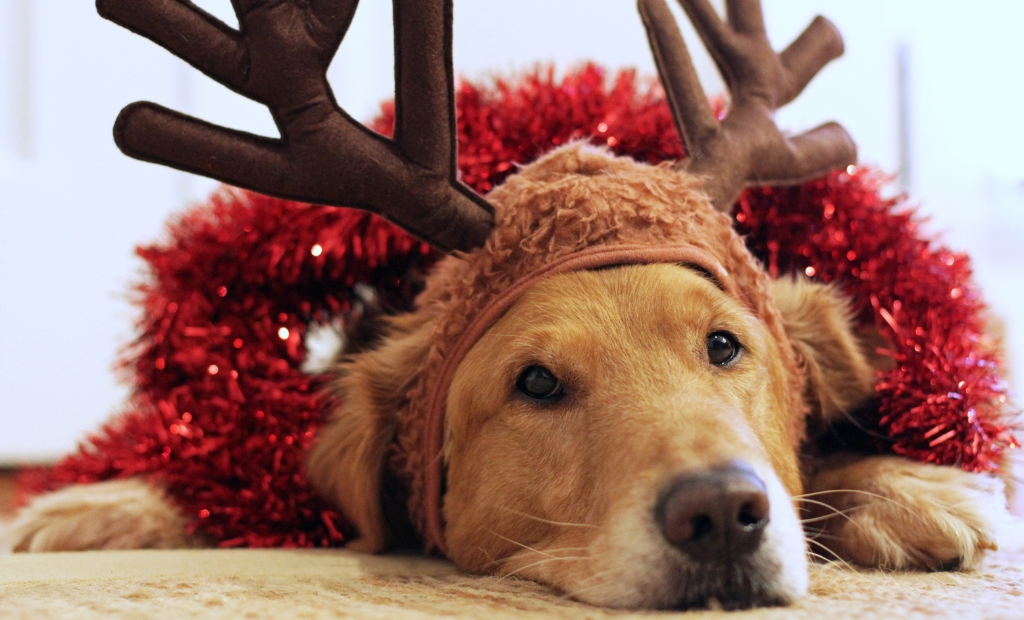
A. Disliking Certain Grooming Practices
Just like humans, dogs have their preferences when it comes to grooming. Some dogs may dislike certain grooming practices such as nail trimming, ear cleaning, or brushing. These activities can be uncomfortable or even painful for them, causing them to avoid you when it’s time for grooming. It’s important to be patient and understanding during these grooming sessions. Take the time to introduce these activities gradually, using positive reinforcement and rewards to create a positive association. If your dog continues to show avoidance behavior, consider seeking professional help from a groomer or veterinarian.
B. Skin Irritations or Allergies
Skin irritations or allergies can also be a reason why your dog is avoiding you. Itching, redness, or discomfort caused by skin conditions can make your dog feel uneasy and reluctant to interact with you. Common causes of skin irritations include fleas, ticks, allergies, or dermatitis. Regularly check your dog’s skin for any signs of irritation or infestation. If you notice any issues, consult with your veterinarian to determine the underlying cause and appropriate treatment. By addressing these skin issues, you can help alleviate your dog’s discomfort and improve their willingness to engage with you.
In conclusion, grooming practices that your dog dislikes and skin irritations or allergies can contribute to their avoidance behavior. By understanding your dog’s preferences and addressing any physical discomfort, you can create a more positive and comfortable grooming experience for them. Remember to be patient, gentle, and seek professional help when needed.
6. Training and Communication
The sixth reason from the top 10 reasons why your dog might be avoiding you is Training and Communication. Training and communication are essential aspects of building a strong bond with your dog. However, miscommunication or confusion can lead to your dog avoiding you. Additionally, negative associations with commands or actions can also contribute to their avoidance behavior.
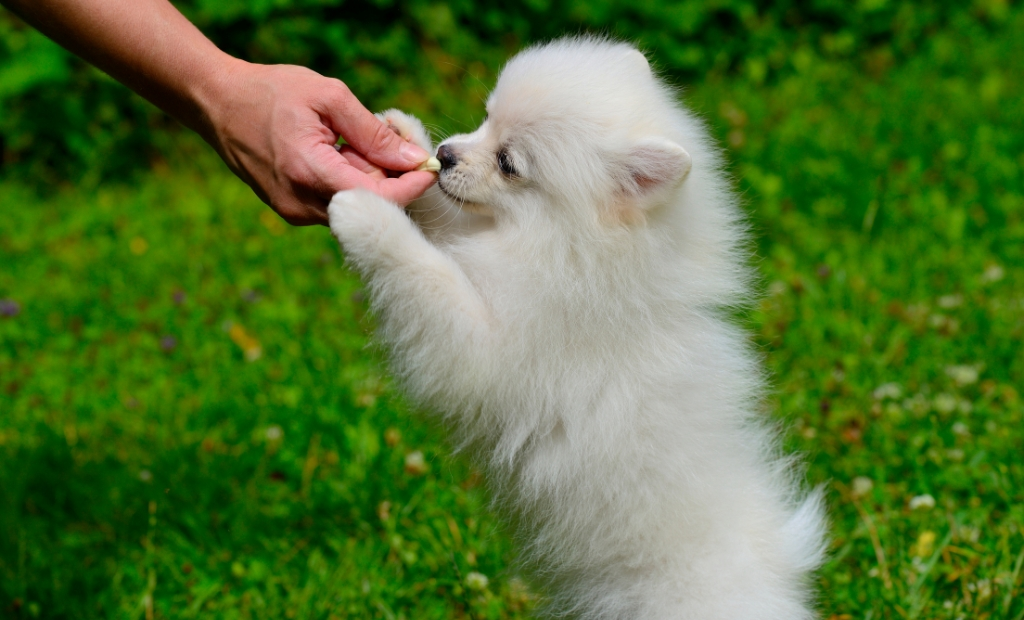
A. Miscommunication or Confusion
Dogs rely on clear and consistent communication to understand what is expected of them. If you are inconsistent with your commands or use different cues for the same behavior, your dog may become confused and unsure of how to respond. This confusion can lead to avoidance behavior as your dog tries to avoid making mistakes or facing potential reprimands. To overcome this, it’s important to establish clear and consistent communication with your dog. Use simple and concise commands, and reinforce them with positive reinforcement techniques such as treats or praise. Consistency and patience are key in helping your dog understand what you expect from them.
B. Negative Associations with Commands or Actions
If your dog has had negative experiences or associations with specific commands or actions, they may start avoiding you to avoid those unpleasant experiences. For example, if your dog associates going into their crate with being left alone for long periods, they may avoid you when you try to crate them. It’s important to identify any negative associations and work on changing them through positive reinforcement and desensitization techniques. Gradually introduce the command or action in a positive and rewarding way, ensuring that your dog feels safe and comfortable throughout the process. By improving communication and addressing any negative associations, you can create a positive and trusting relationship with your dog. This will help them feel more comfortable and less likely to avoid you during training or other interactions.
7. Aging and Cognitive Decline
The seventh reason from the top 10 reasons why your dog might be avoiding you is Aging and Cognitive Decline.

A. Senior Dog’s Changing Needs
As dogs age, their needs and behaviors can change, which may contribute to them avoiding you. Senior dogs may experience physical discomfort, decreased mobility, and changes in their senses, making them less inclined to engage in certain activities or interact with their owners. They may also require more rest and sleep, leading to decreased socialization and interaction.
To address these changing needs, it’s important to provide your senior dog with a comfortable and safe environment. Make sure they have a cozy bed, easy access to food and water, and a quiet space where they can rest undisturbed. Regular veterinary check-ups are crucial to monitor their health and address any age-related issues promptly.
B. Cognitive Dysfunction Syndrome
Cognitive Dysfunction Syndrome (CDS) is a condition similar to Alzheimer’s disease in humans and can affect older dogs. Dogs with CDS may exhibit signs such as disorientation, confusion, changes in sleep patterns, and altered social behavior. They may become more withdrawn and avoid interactions with their owners. Reference
To support a dog with CDS, it’s important to provide a consistent routine and environment. Keep their surroundings familiar and minimize changes that may cause confusion. Engage in mentally stimulating activities, such as puzzle toys or gentle training exercises, to help keep their minds active. Additionally, consult with your veterinarian about potential medications or supplements that may help manage the symptoms of CDS.
Understanding and addressing the changing needs of aging dogs, including cognitive decline, can help create a supportive and nurturing environment. By adapting your interactions and providing appropriate care, you can help your senior dog feel more comfortable and less likely to avoid you.
8. Environmental Stressors
The eighth reason from the top 10 reasons why your dog might be avoiding you is Environmental Stressors.

A. Changes in Living Environment
Changes in the living environment can be a significant factor in why your dog might be avoiding you. Dogs are creatures of habit and thrive on routine and familiarity. Any sudden changes, such as moving to a new house or rearranging furniture, can cause stress and anxiety in your dog. This can lead to them avoiding you or certain areas of the house.
To help your dog adjust to changes in the living environment, it’s important to provide them with a sense of security and stability. Maintain a consistent routine and keep their belongings, such as their bed and toys, in familiar places. Gradually introduce them to the new environment, allowing them to explore at their own pace. Provide plenty of positive reinforcement and rewards to help them associate the new environment with positive experiences.
B. Presence of New Pets or Family Members
The presence of new pets or family members can also be a source of stress for your dog, causing them to avoid you. Dogs are territorial animals and may feel threatened or overwhelmed by the introduction of new individuals into their space. They may exhibit avoidance behaviors as a way to cope with the changes.
When introducing new pets or family members, it’s important to do so gradually and under controlled circumstances. Allow your dog to become familiar with the new individuals at their own pace, using positive reinforcement and rewards to create positive associations. Provide your dog with their own safe space where they can retreat to if they feel overwhelmed. With time and patience, your dog can adjust to the presence of new pets or family members and become more comfortable interacting with you.
By understanding and addressing environmental stressors, such as changes in the living environment and the presence of new pets or family members, you can help your dog feel more secure and less likely to avoid you. Creating a calm and stable environment will contribute to a stronger bond between you and your furry friend.
9. Unresolved Behavioral Issues
The ninth reason from the top 10 reasons why your dog might be avoiding you is Unresolved Behavioral Issues. Unresolved behavioral issues can be a significant reason why your dog might be avoiding you. These issues can stem from past unaddressed behavioral problems or a lack of positive reinforcement.

A. Past Unaddressed Behavioral Problems
If your dog has had previous behavioral problems that were not properly addressed, they may still be affecting their behavior and causing them to avoid you. These unresolved issues could include aggression, separation anxiety, or fear-based behaviors. It’s important to identify and address these problems to create a more positive and trusting relationship with your dog.
To address past unaddressed behavioral problems, consider seeking the help of a professional dog trainer or behaviorist. They can assess your dog’s behavior and provide guidance on how to modify and manage it effectively. Positive reinforcement training techniques can be particularly helpful in addressing these issues and building a stronger bond with your dog.
B. Lack of Positive Reinforcement
Another reason why your dog might be avoiding you is a lack of positive reinforcement. Dogs thrive on praise, rewards, and attention, and they are more likely to engage with you if they associate your presence with positive experiences. If your dog feels ignored or receives punishment more often than rewards, they may start avoiding you.
To address this issue, make sure to provide plenty of positive reinforcement for your dog’s good behavior. Praise them, offer treats, and engage in activities they enjoy. This will help them associate your presence with positive experiences and increase their willingness to interact with you.
By addressing past unaddressed behavioral problems and providing consistent positive reinforcement, you can help your dog overcome unresolved behavioral issues and build a stronger bond with you. Understanding and addressing these issues will contribute to a happier and more harmonious relationship with your furry friend.
10. Trust Issues
The last but not the least reason from the top 10 reasons why your dog might be avoiding you is Trust Issues. Trust issues can be a significant factor in why your dog might be avoiding you. These issues can arise from past negative experiences with humans or a lack of trust-building exercises and techniques.

A. Past Negative Experiences with Humans
If your dog has had traumatic or negative experiences with humans in the past, they may develop trust issues and become hesitant to interact with you. These experiences could include abuse, neglect, or mistreatment. It’s important to understand that these trust issues are not a reflection of your current behavior, but rather a result of their past experiences.
To address trust issues stemming from past negative experiences, it’s crucial to approach your dog with patience, understanding, and empathy. Give them space and time to feel comfortable around you. Avoid sudden movements or loud noises that may trigger their fear or anxiety. Gradually introduce positive experiences and interactions, such as gentle petting, offering treats, or engaging in playtime. Consistency and positive reinforcement will help rebuild their trust in humans, including you.
B. Trust-Building Exercises and Techniques
Trust-building exercises and techniques can also play a crucial role in overcoming trust issues with your dog. These exercises focus on gradually building trust and confidence through positive experiences and interactions.
One effective technique is desensitization, which involves exposing your dog to the source of their fear or anxiety in a controlled and gradual manner. This can help them develop a more positive association and reduce their avoidance behavior.
Another technique is counter-conditioning, where you pair the presence of something your dog fears or avoids with something they love or enjoy. For example, if your dog is afraid of strangers, you can reward them with treats or praise when they remain calm in the presence of unfamiliar people. By addressing past negative experiences and implementing trust-building exercises and techniques, you can help your dog overcome trust issues and develop a stronger bond with you. Patience, consistency, and positive reinforcement are key in building trust and creating a safe and loving environment for your furry friend.
Frequently Asked Questions
Why has my dog started avoiding me?
Behavioral changes can result from various factors, including health issues, changes in routine, or new additions to the family. Observe for any signs of discomfort, and consider recent changes in your dog’s environment or daily schedule.
Why does your dog turn away from you?
There are several reasons why your dog may turn away. It could be a sign of submission, respect, or a desire for space. Observing your dog’s body language and context can help determine if they are signaling a need for alone time or simply expressing a submissive posture. If accompanied by other behavioral changes or health concerns, consult with a veterinarian to rule out any underlying issues. Remember, each dog is an individual, and their behavior can vary based on their personality and experiences.
How do I get my dog to love me again?
Rebuilding your bond with your dog involves patience, positive reinforcement, and understanding. Spend quality time engaging in activities your dog enjoys, offer treats, and use gentle petting. Create positive associations by making interactions enjoyable. Be consistent, show empathy, and allow your dog to initiate contact. If behavioral changes persist, consider consulting with a professional dog trainer or behaviorist for personalized guidance.
How do I know if my dog is afraid of me?
Signs of fear in dogs include cowering, avoiding eye contact, trembling, tucked tail, and submissive postures. If your dog displays these behaviors, assess your interactions for potential sources of fear. Ensure a calm and positive environment, use gentle approaches, and give your dog space when needed. Building trust through positive reinforcement and patience is crucial. Seeking guidance from a professional dog trainer or behaviorist may help address specific fears and build a stronger bond.
Can dogs sense a bad person?
Dogs have keen instincts and can pick up on human body language, tone of voice, and energy. While they can sense changes in behavior, it’s essential not to rely solely on a dog’s judgment. Dogs may react based on fear, past experiences, or unfamiliar scents. Encourage positive interactions to build trust and assess situations objectively. If your dog consistently reacts negatively to a person, consider gradual introductions and supervised interactions. Trust your own judgment and create a safe environment for your dog to thrive.
How do I get my dog to stop avoiding me?
Rebuilding trust and strengthening your bond takes time and patience. Start by creating a positive environment with treats, gentle interactions, and engaging activities. Respect your dog’s boundaries and allow them to initiate contact. Identify any potential triggers causing avoidance and address them positively. Consistency, positive reinforcement, and understanding your dog’s needs will contribute to a more secure and trusting relationship. If avoidance persists, consult with a professional dog trainer or behaviorist for personalized guidance.
Why do dogs dislike a person?
Dogs may dislike a person for various reasons, including past negative experiences, unfamiliar scents, or changes in body language. Assess the situation, consider the person’s behavior, and observe your dog’s reactions. It could be fear, anxiety, or a need for personal space. Encourage positive interactions, use treats, and allow your dog to approach at their own pace. If dislike persists, consult with a professional to address underlying issues and promote positive associations.
Do dogs deliberately ignore me?
Dogs may not deliberately ignore you; there could be various reasons for apparent inattention. Factors like distractions, health issues, or a lack of understanding of cues may contribute. Assess the environment, use positive reinforcement, and ensure clear communication. If issues persist, consider consulting with a professional dog trainer or behaviorist to address potential training gaps or underlying causes.
How do I say sorry to my dog?
Dogs respond to tone and body language. Express remorse through a calm voice and gentle petting. Spend quality time engaging in activities your dog enjoys. Use positive reinforcement with treats to reinforce positive behavior. Dogs appreciate routine, so maintaining a consistent and loving approach helps rebuild trust. Understand your dog’s needs and offer reassurance through positive interactions.
How to hug a dog?
Approach your dog calmly and slowly. Pay attention to their body language for signs of comfort. Avoid direct eye contact and reach from the side to gently pet them before attempting a hug. Use a gentle touch, and be mindful of their response. Not all dogs enjoy hugs; respect their comfort level and avoid forcing physical contact. If your dog shows signs of discomfort, such as pulling away or tensing, opt for alternative ways to express affection, like gentle stroking or playtime. Understanding your dog’s preferences ensures positive and stress-free interactions.
How do you say I love you in dog language?
Dogs interpret love through actions and body language. Express affection with gentle petting, soft spoken words, and positive interactions. Use a calm tone and maintain eye contact to convey warmth. Pay attention to your dog’s cues; tail wagging, relaxed body, and licking are signs of happiness. Spending quality time, engaging in play, and providing treats contribute to a strong bond. Understand your dog’s unique preferences and respond to their cues to build a loving connection.
How can I tell if my dog is in pain and avoiding me as a result?
Watch for signs such as limping, reluctance to move, or changes in appetite. If you suspect pain, consult with your veterinarian for a thorough examination and appropriate pain management.
Is it normal for my dog to avoid grooming sessions?
Some dogs may dislike specific grooming activities. Gradually introduce grooming practices, use positive reinforcement, and ensure your dog associates grooming with positive experiences.
My dog avoids me during thunderstorms. What should I do?
Dogs may be fearful of loud noises. Create a safe, quiet space for your dog during storms, and provide comforting items like blankets or toys. Consult with a professional for desensitization techniques.
Can changes in my living environment make my dog avoid me?
Yes, moving to a new house or introducing new pets can be stressful for dogs. Allow your dog time to adjust, maintain familiar routines, and provide reassurance through positive interactions.
What if my dog has trust issues due to past experiences?
Build trust through gentle interactions, positive reinforcement, and patience. Avoid forcing interactions and allow your dog to initiate contact at their own pace. Consider professional assistance if needed.
Conclusion for 10 reasons why your dog might be avoiding you
Understanding why your dog might be avoiding you is crucial for building a strong and trusting relationship with your furry friend. By exploring various factors such as fear and anxiety, health issues, lack of socialization, behavioral changes, grooming or physical discomfort, training and communication, aging and cognitive decline, environmental stressors, unresolved behavioral issues, and trust issues, you can address the root causes of their avoidance behavior.
It’s important to approach your dog with patience, empathy, and positive reinforcement. By providing a safe and loving environment, you can help them overcome their fears and build trust. Gradual exposure to triggers, desensitization, and counter-conditioning techniques can also be effective in reducing avoidance behavior.
Remember, trust-building exercises and techniques play a significant role in strengthening the bond between you and your dog. Consistency, understanding, and positive experiences are key in rebuilding trust and creating a harmonious relationship.
So, if your dog is avoiding you, don’t despair. With time, effort, and the right approach, you can help them feel comfortable and secure in your presence. By addressing their needs and providing a nurturing environment, you can enjoy a fulfilling and loving relationship with your canine companion.
In conclusion, by addressing the various reasons why your dog might be avoiding you, you can create a positive and trusting bond that will enhance both their well-being and your relationship. Remember to be patient, understanding, and consistent in your efforts, and you will see the rewards of a happy and contented dog who loves spending time with you.

